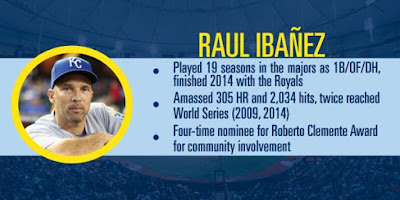Last week, I looked at
trends in Tampa Bay area Minor League attendance since 2005. Since 2005, total Tampa Bay area Minor League attendance has increased 89%, from 249,125 to 471,212. Today, I want to add the Tampa Bay Rays attendance to the mix to see how the two entities relate, if there is any correlation, and find the total amount of people attending baseball in the Tampa Bay area from April to October.
Before I begin, let me address one issue that I know will be brought up. There is a belief that Minor League Baseball is an
"inferior good" - that is, demand will go up when income goes down. In the Tampa Bay area, Minor League Baseball is vastly cheaper than Major League Baseball. While the cheapest ticket to a Rays game is $12-$15 dollars, Tampa Bay area Minor League teams charge between $4-$6 for a ticket. Parking at Tropicana Field and the surrounding area can cost anywhere between $5 and $20. Parking at area Minor League stadiums or fields costs $0 to $5.
However, this is an individual event comparison. When looking at the entire season, we have to look at the quantity of games attended. For example, a family of four could attend one Rays game for $60-$100. Or they could attend 2 to 3 Minor League games for the same price.
(Note: Most Minor League teams in the area have regular ticket discounts - sometimes free - and regular concession discounts that increase the appeal for area fans.)
For a family looking just for entertainment and not tied to the emotion of winning or losing, Minor League Baseball more times a year for the same price is a more cost-efficient option and gives them more bang for their buck. This is indisputable.
The following chart shows Rays winning percentage, Rays attendance, Tampa Bay area Minor League attendance, and the Rays percentage of total area attendance for each year from 2005 to 2014.
(Note: Although we are giving a cursory look at the relationship between the Rays attendance and winning percentage, I am assuming no correlation between winning and attendance for Minor League Baseball.)
Click to enlarge.
The following graph depicts the attendance data of the chart.
There is a lot going on here, so let's take it year by year.
2006: Devil Rays attendance increased (despite a worse record) and Minor League attendance also increased. Overall, Tampa Bay area baseball attendance increased over 19%.
2007: Devil Rays won more games, their attendance went up, and Minor League Baseball also increased. Overall, Tampa Bay baseball attendance increased nearly 4%.
2008: The Rays went from worst to first and won their division. As a result of their winning ways and team image, Rays attendance increased over 30%. Throughout the Tampa Bay area, Minor League attendance dropped over 10%. Due to the Rays vast increase, overall Tampa Bay area baseball attendance increased 22.5%.
2009: Rays attendance continued to climb, despite a drop in winning percentage.
(Perhaps attributed to the 2008 buzz and afterglow, per Maury Brown of Biz of Baseball). Meanwhile, Tampa Bay area Minor League Baseball attendance decreased nearly 2%. The Rays attendance increase and Minor League decrease gave the Rays their largest percentage of total Tampa Bay baseball attendance (86.29%) in our examined time frame.
2010: The Bradenton Marauders began play in McKechnie Field. Across the Skyway Bridge, the Rays drew approximately 10,000 less people to Tropicana Field despite a better record. Lead by the Marauders, Minor League attendance increased over 21%, and the largest amount of total fans in our examination attended Tampa Bay area baseball, over 2.2 million.
2011: Minor League attendance again increased over 20%, led by another Marauders' attendance surge. The Rays attendance decreased 18% and the Rays' percentage of total attendance dropped over 6%, from 83% to slightly over 77%.
2012: The Rays winning percentage decreased, their attendance increased, and their percentage of total Tampa Bay baseball attendance increased. Tampa Bay Minor League Baseball attendance also increased slightly. Overall, area baseball attendance increased a bit below 2%.
2013: Rays attendance dropped 3%, despite a higher winning percentage. Area Minor League Baseball attendance continued to increase. The Rays percentage of total Tampa Bay attendance decreased almost 1%.
2014: Last season, Rays winning percentage dropped considerably. As well, Rays attendance dropped to its lowest point since 2007. Led by a 13% increase in the Clearwater Threshers' attendance and an 18.4% increase in Dunedin Blue Jays attendance, Tampa Bay area Minor League attendance increased over 4%. The rise in Minor League attendance and decrease in the Rays attendance gave the Rays their lowest percentage of total attendance in our examined time frame.
From 2005 to 2007, four out of five area baseball attendees visited Tropicana Field. From 2008 to 2010, this number increased to five of every six. In 2014, this number was barely three of four.
Minor League presence or popularity is not the only factor affecting Rays attendance. Far from it. There are many other factors to be considered, from economic to demographic to marketing efforts (2006?, 2008?) to considerable swings in their winning percentage (2008?, 2014?). This site will look at all these factors in time. However, based on this study, we can definitely say Tampa Bay area Minor League Baseball has had some impact on the attendance of the Tampa Bay Rays.

















































